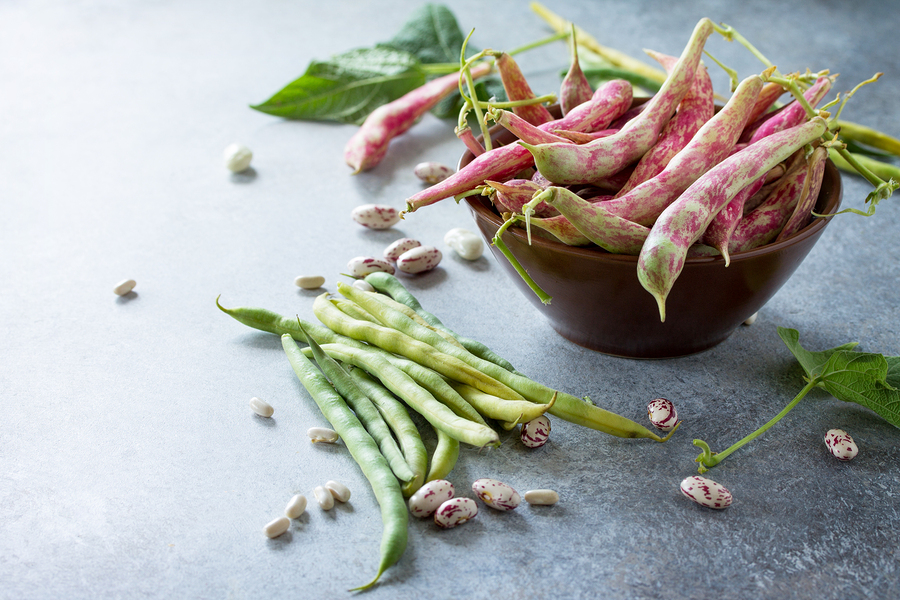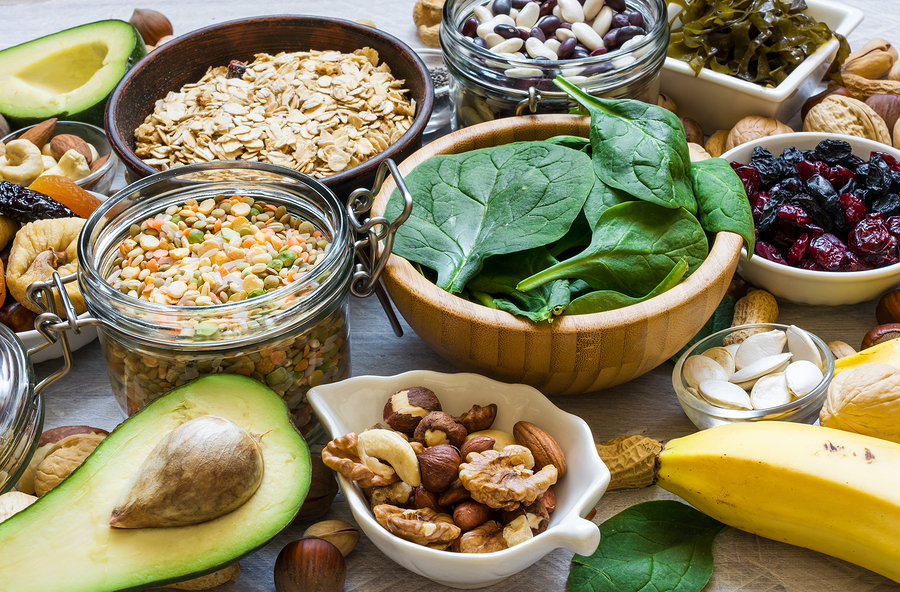- Make It Yourself Lavender Heart-Shaped Bath Bombs!
- 20 Things You Never Knew About “Down There”
- 12 Best Foods For Those Suffering From Arthritis Pain
- 12 Personal Hygiene Mistakes Almost Everyone Makes (Mom Never Told You About #4!)
- 15 Medicinal Plants And Herbs From The Cherokee People
- 12 Mind-Blowing Benefits Of Drinking Coconut Water During Pregnancy
- 12 Outstanding Winter Foods That Won’t Fatten You Up Like A Christmas Turkey
Shelling Beans Contain A Treasure Chest Of Nutrition
What are shelling beans?
Shelling beans, like all other beans, fall under the legume umbrella. Legumes are a high-protein, low-fat source of vitamins, minerals, and dietary fiber.
Unlike other beans, such as green beans, shelling beans have pods that must be removed before the beans can be cooked or dried. Shelling beans should be easy to shell, and are usually harvested when the pods and the beans inside are dry and plump, and the pod looks as if it is about to burst. Shelling beans are very seasonal, but the dried version can be sold throughout the year, to extend the somewhat short season.
If you are keen to have shelling beans in the fresh state, there are always numerous varieties at farmer’s markets during late summer and early fall.
Fresh shelling beans can be shelled, dried and stored for later use, or shelled and cooked fresh for a seasonal treat, and added to soups, stews, or salads.
How to choose the best fresh shelling beans
Fresh shelling beans are not easy to get. The season is also on the short side, starting around July to September in warmer climates, or up to October in colder areas.
When you buy shelling beans, they need to be just a little dried out when you purchase them, but look for those with a fresh-looking green stem end.
Buy pods with plump, fat beans inside that feel heavy for their size. They are the ideal ones to choose!
Unfortunately, you will not find many stores that sell fresh shelling beans, as most offer them already shelled and dried. For the delicious fresh beans, you will have visit farmer’s markets, or specialist market and produce stores.
How to store fresh shelling beans
It is a good idea to buy as much as you can when they are available, as these beans are easy to store.
If you are going to use them within a couple of days, simply keep them in the fridge in their pods until you need them. However, if you plan to keep them in the fridge for 3 or 4 days before use, shell the beans before refrigeration.
Most varieties of shelling beans, once shelled, are absolutely ideal for freezing. The best way to do this is to lay the beans out on a baking sheet, and freeze until frozen through. Transfer the amounts you will want to cook into sealable plastic bags and they will stay fresh in the freezer for up to 6 months.
Once defrosted, the beans will be ready to cook and taste as fresh as the day you bought them.
Continue to Page 2
Health benefits are not well-known!
This humble bean is generally extremely underrated when it comes to its nutritional and mineral value. Many folks tend to forget that from the U.S. Civil War right through World War I and II, beans were an important part of soldiers’ rations.
In the later wars, they were mostly canned and sometimes mixed with pork or bully beef which provided some animal fat and extra protein. Medical personnel of the day had begun to realise that beans were nutritious and healthy, especially for soldiers in the field.
Most varieties of beans have similar health-promoting benefits, such as being high in certain minerals, important vitamins, antioxidants, contain no cholesterol, and are low in fats, which may help lower your risk of cancer, heart disease, and diabetes.
The nutritional profile of beans
Here is a list of the nutrients offered by most varieties of shelling beans.
-
- Beans are high in thiamine (vitamin B1) which is used to help metabolize food into energy – a very important function. Another compound known as folate (vitamin B9) is also present, which is vital for forming DNA, and is known to prevent certain kinds of birth defects.
- Vegetable proteins are prolific in beans. However, they are not complete proteins, which means they lack a certain amino acid that you need to get from meat, fish, chicken, or dairy. Note that for your body to benefit from protein intake, which is critical for building cells, muscles, and regulating body organs and tissues, both vegetable protein and protein from meat is necessary. The good thing is that shelling beans added to soups, stews, chicken, or just served with some grated cheese, give you the “complete protein” you need for optimal health.
- Dietary fiber. Shelling beans provide you with soluble fiber which keeps the colon working and helps combat cholesterol, is low in fat, lowers your risk of heart disease, and may keep obesity at bay.
- Shelling beans contain trace minerals essential for health, such as:
- Zinc which helps with wound healing.
- Manganese for forming healthy bones and processing cholesterol.
- Iron which is important for the formation of red blood cells to carry oxygen throughout the body.
- Potassium helps to counteract the effects of too much sodium in the blood which can lead to high blood pressure.
Magnesium which is essential for energy production and blood sugar control. - There are other minerals which are also obtainable from beans like copper and phosphorous which play a role in forming cell membranes and maintaining healthy DNA.
Continue to Page 3
Preparing shelling beans
- Shelling beans are tasty in soups and stews, and there is no need to soak before using. Most shelling beans need less than 30 minutes to cook for a melt-in-the-mouth texture.
- After shelling, you can simmer the beans in a little water and olive oil, plus add some minced garlic for flavour. You can also include a couple of thinly sliced spring onions, as well as a few fresh herbs like parsley, rosemary, sage, or thyme.
- The mixture can be added to summer stews or pasta, or eaten on their own as a delicious side dish.
- Braising is also an option for an extra smooth taste.
READ ALSO: Surprising Health Benefits And Nutritional Facts About Banana Infographic
In conclusion
Now that you know how healthy beans are for you, it could drastically change the way you look at them in the future.
There are many varieties of fresh shelling beans such as Cannellini, English Shelling Beans, Italian butter beans, Gigante beans, kidney beans, and the most popular of all – cranberry beans.
These are just a few of the more well-known varieties of fresh shelling beans available.
In actual fact, there are hundreds of varieties worldwide.
References:



































